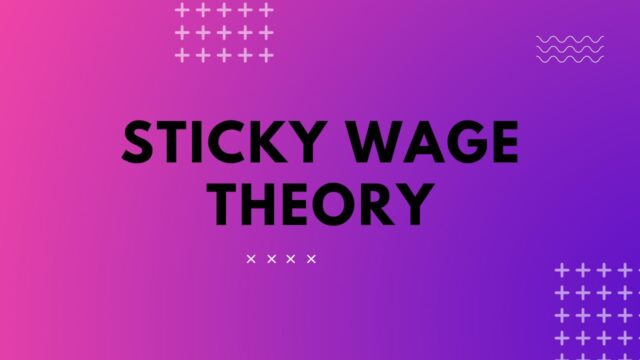
What is sticky wage theory
The sticky wage theory is the idea that wages are slow to change in response to changes in the economy. The theory was first proposed by economist Milton Friedman in 1968, and it has since been used to explain a number of economic phenomena, including unemployment and inflation. According to the theory, there are a number of factors that can make wages “sticky,” or slow to change. For example, workers may be reluctant to accept a pay cut, even if it means keeping their job.
Similarly, employers may be hesitant to reduce wages, for fear of reducing employee morale or sparking a wave of resignations. As a result, wages can remain higher than they would otherwise be in periods of economic downturn, leading to higher levels of unemployment. Inflation can also result from sticky wages, as businesses pass on the higher costs to consumers. While the sticky wage theory has been criticized by some economists, it remains an important part of mainstream economic thinking.
The benefits of sticky wage theory
Sticky wage theory is the idea that wages are slow to adjust to changes in market conditions. This theory was first proposed by economists in the 1930s as an explanation for why wages did not immediately fall during the Great Depression, despite high levels of unemployment. The theory has since been used to explain a variety of economic phenomena, including why inflation sometimes occurs even when there is high unemployment.
There are a number of reasons why sticky wages can be beneficial to an economy. First, they help to ensure that workers are able to keep up with the cost of living. If wages fall too quickly, workers may find it difficult to pay for basic necessities like food and housing. Second, sticky wages can help to prevent sharp increases in income inequality. If the rich get richer while the poor get poorer, it can lead to social and economic instability. Finally, sticky wages can provide businesses with greater certainty about their labor costs. This stability can encourage businesses to invest more in new products and services, which can lead to economic growth.
The drawbacks of sticky wage theory
One significant drawback is that it does not adequately explain why wages vary across different sectors and regions. For example, if wages are truly “sticky,” then one would expect to see the same level of wages in all sectors of the economy. However, this is not the case. Wages vary significantly across sectors, suggesting that other factors, such as the skill level of workers, are also important determinants of earnings.
In addition, sticky wage theory fails to explain why some workers are able to find new jobs relatively quickly after being laid off, while others remain unemployed for prolonged periods of time. This suggests that there are other factors, such as unemployment insurance and job search costs, that play a role in determining how quickly workers can find new employment. Overall, sticky wage theory offers a partial explanation for inflation and unemployment, but it fails to account for a number of important real-world phenomena.
Criticisms of sticky wage theory
There are a number of criticisms of sticky wage theory. One criticism is that it assumes that wages are the only factor that determines employment levels. However, there are other factors that can affect employment, such as changes in productivity or the overall level of demand in the economy.
Another criticism is that sticky wage theory does not take into account changes in the labor market over time. For example, if there is an increase in the number of people looking for work, wages may not adjust downward as quickly as required to reach full employment. Finally, some economists argue that sticky wages are not a major problem in practice, and that other factors, such as changes in productivity or the overall level of demand, are more important influences on employment levels.
The future of sticky wage theory
Since the introduction of sticky wage theory, there has been much debate about its validity. Some economists argue that wages are not sticky in the long run, while others believe that they are sticky in the short run but eventually adjust to changes in the economy. Despite the disagreement, sticky wage theory has been an important contribution to our understanding of how the economy works. In the future, it is likely that economists will continue to use sticky wage theory to explain economic fluctuations and to develop policies that can reduce the impact of these fluctuations.


































